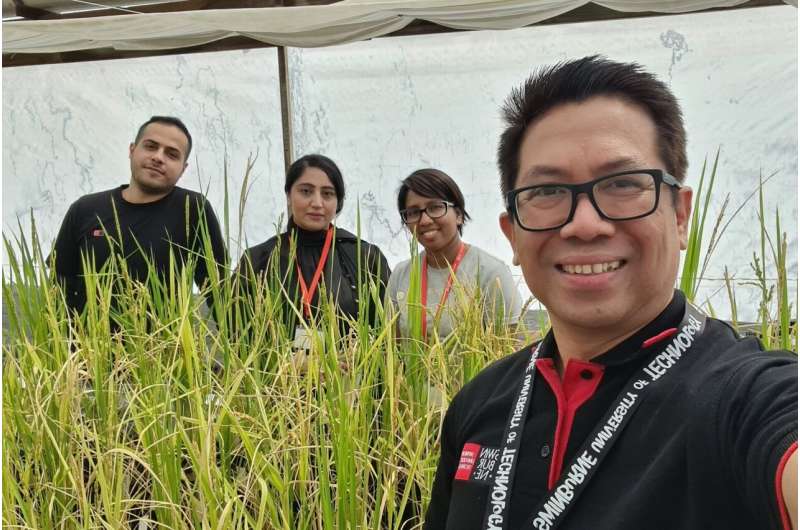'Light of a million suns' key to unlocking secrets of healthier and safer rice

Swinburne scientists are using a football field-sized synchrotron light facility to examine individual grains of rice to help enhance global food security, nutritional value and the food safety of cereal grains.
By rapidly estimating the nutrient profile of hundreds of varieties of colored rice, the research will help produce rice that is more nutritious, and lead to more positive health outcomes in the developed and developing world.
Lead researcher Dr. Vito Butardo says the findings can be applied across a range of grains—wheat, barley, oats and corn, for example—to create more nutritious crops around the world.
"Our research can be used immediately by Australian and international manufacturers to help consumers make healthier choices when buying, cooking and eating rice," Dr. Butardo says.
"Over time, we can select and breed rice that has a lower glycaemic index (GI), higher concentration of micronutrients—like iron and zinc—and fewer nasties—like lead, mercury or cadmium."
Using radiation of 1 million suns from around the globe
Dr. Butardo and his team are among the first few Australian-based researchers to gain access to the Canadian Light Source, a synchrotron facility, which accelerates electrons in a close loop magnetic field to produce light brighter than a million suns.
This global connection allows Dr. Butardo to utilize the power of the synchrotron facility located halfway around the world, which can be remotely controlled in his lab in Melbourne, Australia, to determine the nutritional and safety profile of grains.
Regular biochemical analysis involves turning rice grains into powder and can take hours or days to obtain full results.
Detailed analysis by the synchrotron can take just minutes, allowing Dr. Butardo's team to analyze the nutrient-rich surface of hundreds of grains and help determine the exact location of the health promoting compounds in rice.
This pioneering, non-destructive and high-throughput approach has already yielded results demonstrating the high nutritional value of colored rices over white rice.
Dr. Butardo says the research has broad application across underfed and overfed rice-consuming communities.
"Understanding colored grains better will help us create food that is more nutritious for everyone, whether it be ensuring the underfed are getting a good balance of macro- and micronutrients, or helping the overfed boost micronutrient intake, which can be a problem for overweight and obese individuals," he says.
Provided by Swinburne University of Technology





















